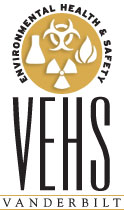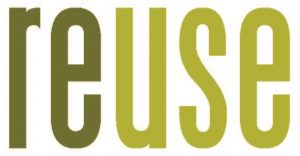-
Chemical Safety
- Laboratory Safe Practices: Food Handling and Storage
- Safety in the Chemical Laboratory (Guide)
- The Hazard Communication Standard (HCS; Training)
- All individuals who work with chemicals at Vanderbilt must complete training that covers all requirements of this law.
- Laboratory Safety Standard (Training)
- For any individuals who work in research, teaching or clinical laboratories.
- Safety & Environmental Protection in the Chemical Laboratory (Training)
- Strongly recommended for all individuals who work with chemicals in a laboratory setting
- Online Safety Training in the Learning Exchange
- General Work Practices for Fume Hoods
- Chemical Compatability Chart
- Handling and Storage of Compressed Gases
- Laboratory Guide for Managing Chemical Waste
- Request Chemical Waste Pickup
- Laboratory Sink/Sewer Disposal of Wastes (Guide)
- Chemical Spill Guidelines
-
Biological Safety
- Biosafety Training Decision Tree
- Biosafety 101: Standard Microbiological Practices (Training)
- For all research personnel who will be working with biological materials and/or recombinant DNA molecules
- Principles and Practices of Biosafety (BSL2; Training)
- For investigators and research staff members who handle biological materials that require BSL-2 containment, including agents infectious to humans, animals or plants; toxins of a biological origin; human or non-human primate derived materials including blood, body fluids, unfixed tissues and cells (including immortalized cell lines).
- Blood Borne Pathogen (Training)
- For investigators exposed to human blood, body fluids, tissues or cells, or exposure to one of these viruses: HIV, HBV or HCV.
- Working Safely with Human-Derived Materials in the Lab (Training)
- For investigators exposed to human blood, body fluids, tissues or cells, or exposure to one of these viruses: HIV, HBV or HCV in a laboratory setting.
- Online Safety Training in the Learning Exchange
- Ready-to-Use Disinfectants
- Using Sharps in the Lab
- Biohazardous Waste: Segregation, Collection & Disposal Guide
- VU Lab Guide: Using Stericycle for Biowaste Removal, Treatment & Disposal

Lab Safety Protocol for Working with Biological Samples
This document reviews proper technique and measures to ensure the safety of lab personnel while potentially hazardous biological samples are being processed in the lab.

Biosafety in Microbiological and Biomedical Laboratories, 5th Edition (CDC & NIH)
CDC’s Office of Health and Safety and the National Institutes of Health periodically publish and update several national publications on Biosafety: Biosafety in Microbiological and Medical Laboratories (BMBL) and Primary Containment for Biohazards: Selection, Installation, and Use of Biosafety Cabinets. The 5th and 3rd editions of these publications (respectively) are considered national guidelines to promote the safety and health of workers in biological and medical laboratories.

Primary Containment for Biohazards: Selection, Installation and Use of Biological Safety Cabinets 3rd Edition
This document is currently printed as Appendix A of the Biosafety in Microbiological and Medical Laboratories (BMBL).
-
Writing Tips
Whitesides’ Group: Writing a Paper (2004)
A valuable resource on writing scientific papers.
Also of interest are the videos below:
-
Surplus Items
Vanderbilt University ReUse Surplus Program
The ReUse Surplus Program manages unneeded items owned by Vanderbilt University departments, offices, and laboratories.
-
Instrumentation Manuals

